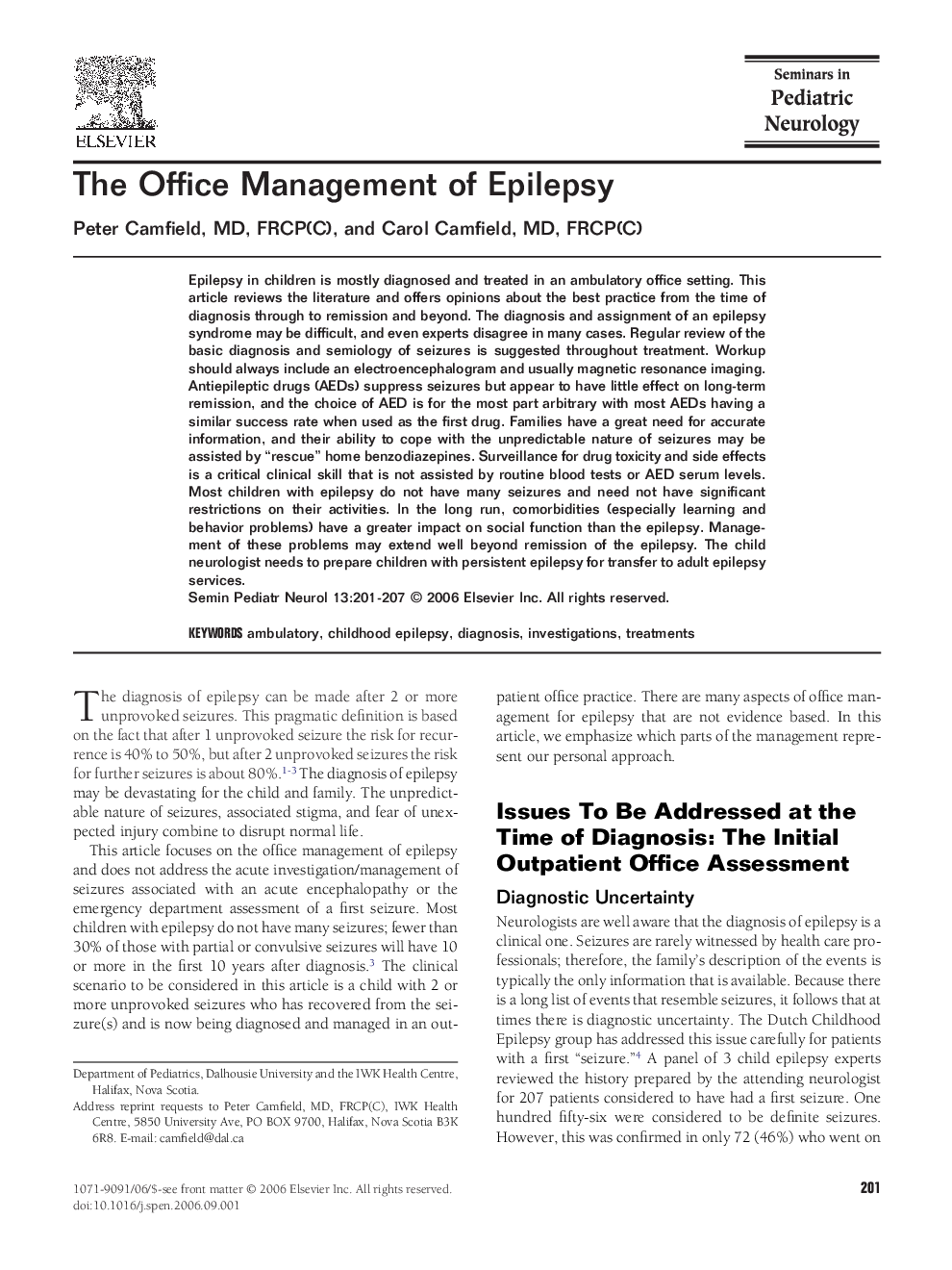| Article ID | Journal | Published Year | Pages | File Type |
|---|---|---|---|---|
| 3091177 | Seminars in Pediatric Neurology | 2006 | 7 Pages |
Epilepsy in children is mostly diagnosed and treated in an ambulatory office setting. This article reviews the literature and offers opinions about the best practice from the time of diagnosis through to remission and beyond. The diagnosis and assignment of an epilepsy syndrome may be difficult, and even experts disagree in many cases. Regular review of the basic diagnosis and semiology of seizures is suggested throughout treatment. Workup should always include an electroencephalogram and usually magnetic resonance imaging. Antiepileptic drugs (AEDs) suppress seizures but appear to have little effect on long-term remission, and the choice of AED is for the most part arbitrary with most AEDs having a similar success rate when used as the first drug. Families have a great need for accurate information, and their ability to cope with the unpredictable nature of seizures may be assisted by “rescue” home benzodiazepines. Surveillance for drug toxicity and side effects is a critical clinical skill that is not assisted by routine blood tests or AED serum levels. Most children with epilepsy do not have many seizures and need not have significant restrictions on their activities. In the long run, comorbidities (especially learning and behavior problems) have a greater impact on social function than the epilepsy. Management of these problems may extend well beyond remission of the epilepsy. The child neurologist needs to prepare children with persistent epilepsy for transfer to adult epilepsy services.
